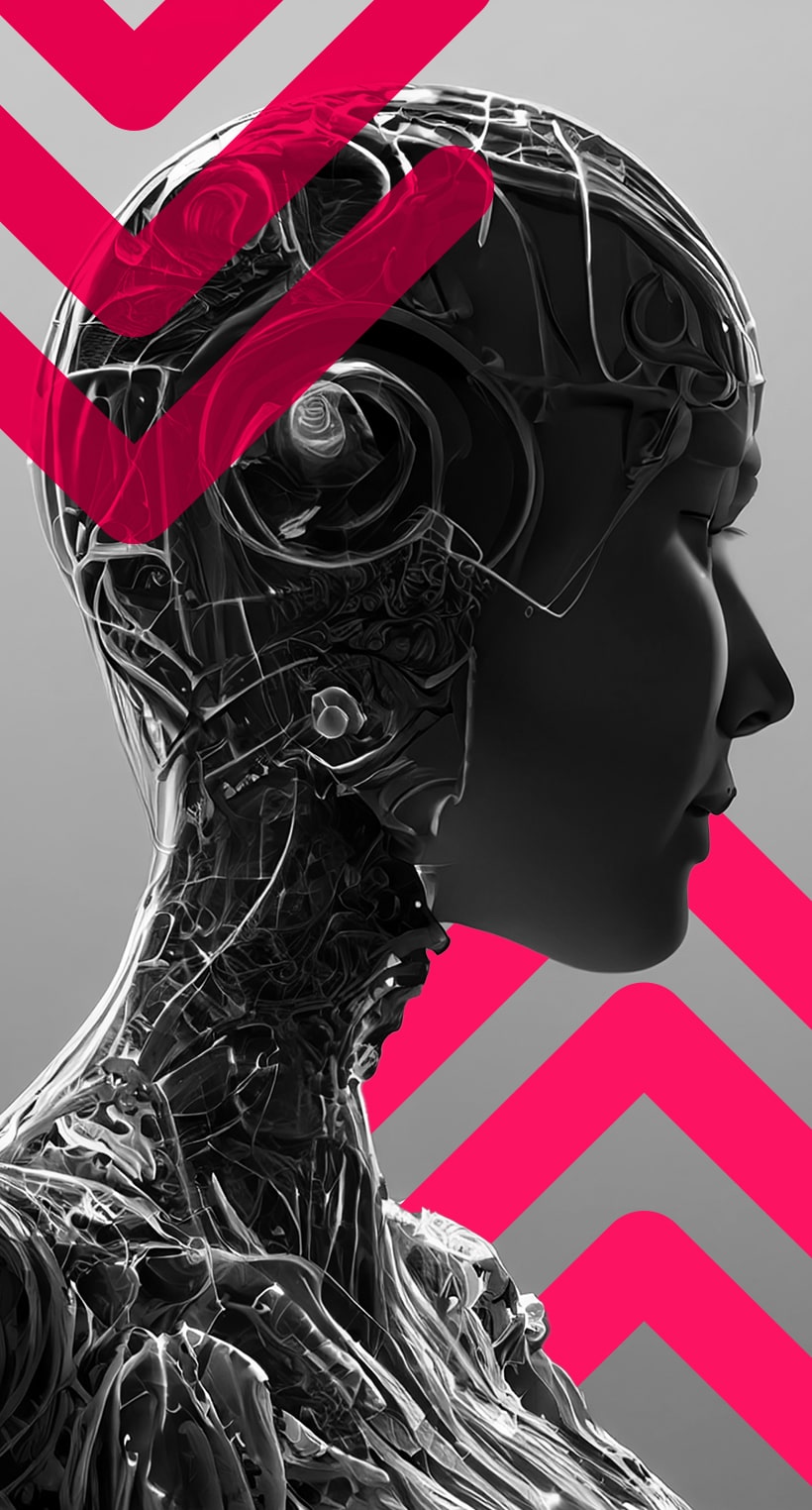Artificial Intelligence (AI) and machine learning (ML) have undergone a remarkable evolution over the years, transforming from a mere concept into a powerful reality. Technological advances and a growing understanding of AI & machine learning have become integral to our lives, shaping industries, revolutionising automation, and opening doors to endless possibilities. This article delves into the fascinating journey of artificial intelligence AI, highlighting key milestones and breakthroughs that have propelled its evolution.
The Birth of AI
AI, short for Artificial Intelligence, has its roots in the 1950s when computer scientists and mathematicians embarked on a fascinating journey to explore the concept of creating machines that could exhibit intelligent behaviour. Notable pioneers in the field of artificial intelligence, like Alan Turing and John McCarthy, played a crucial role in laying the foundation for AI research, sparking curiosity and paving the way for future advancements.
Alan Turing first introduced the notion of machine intelligence through his influential paper titled “Computing Machinery and Intelligence“. In this groundbreaking work, Turing proposed the now-famous Turing Test, a method to determine whether a machine possesses human-like intelligence. This test became a fundamental pillar in the development of AI as a scientific discipline, shaping the way researchers approached the field and inspiring further exploration.
John McCarthy, often called the father of Artificial Intelligence, also made significant contributions to the field. He coined “Artificial Intelligence” in 1956 and developed the programming language LISP for AI research. McCarthy’s work in AI spans various domains, including problem-solving, knowledge representation, and machine learning. He also advocated for the responsible and ethical use of AI. McCarthy’s legacy continues to shape the advancements in AI, inspiring researchers and practitioners to push the boundaries of its capabilities for the betterment of society.
Thanks to the visionary ideas and contributions of Turing, McCarthy, and other pioneers in artificial intelligence, AI has evolved significantly over the years, leading to remarkable breakthroughs and innovations that continue to shape our world today.
Early Developments and Expert Systems
During the 1960s and 1970s, a significant number of researchers devoted their time, energy, and intellectual resources to the creation and development of expert systems. These innovative systems were designed with the primary objective of emulating the intricate decision-making processes characteristic of human beings.
These expert systems functioned based on predefined rules and extensive knowledge bases. Their primary role was to address and solve specific problems. In doing so, they effectively demonstrated the immense potential and capabilities of artificial intelligence and machine learning in various fields. Fundamentally, expert systems represented some of the earliest instances of successful artificial intelligence software.
A particularly significant and noteworthy example of the early development of artificial intelligence during this period is the expert system known as MYCIN. This system was developed at the prestigious Stanford University in the 1970s. MYCIN was explicitly designed with a unique purpose – to diagnose bacterial infections accurately and provide well-informed recommendations for treatment.
This groundbreaking system showcased the extraordinary ability of artificial intelligence to assist in complex decision-making tasks. These tasks were traditionally carried out by experts in the respective fields, highlighting the transformative potential of AI.
The success of MYCIN and other similar expert systems laid a solid foundation for further advancements in artificial intelligence. This success opened up many new possibilities for integrating intelligent machines in various industries and sectors, thus revolutionising the way we approach problem-solving and decision-making.
Machine Learning and Neural Networks
The advent of machine learning AI, which took place in the 1980s, was a game-changer in the evolution of artificial intelligence. It was a pivotal moment that introduced machine learning algorithms, allowing computers to learn from data and continuously enhance their performance. This breakthrough enabled AI machine learning systems to make predictions, recognise patterns, and adapt to new information, making them more functional and efficient. Moreover, neural networks, inspired by the structure of the human brain, emerged as a powerful tool for pattern recognition in machine learning. These networks consist of interconnected nodes, or artificial neurons, that can process and transmit information, mimicking the functionality of the human brain.
Thanks to the development of backpropagation algorithms, neural networks became capable of training on large datasets. This advancement led to breakthroughs in various fields, including speech recognition, image classification, and natural language processing.
Big Data and Deep Learning
At the dawn of the 21st century, we witnessed an unprecedented explosion of big data. This explosion of digital information has really taken things to the next level for artificial intelligence. With so much data available, we can train more sophisticated and accurate models, which means AI is getting even better at what it does.
One of the most notable advancements in this era is deep learning, a specialised subset of machine learning. Deep learning quickly emerged as a dominant force in the AI landscape, enabling AI tools to tackle and solve more complex and intricate tasks such as autonomous driving, where AI needs to make split-second decisions based on tons of sensory inputs. Or medical diagnosis, where spotting subtle patterns and anomalies is crucial. And even language translation, where understanding different cultures and contexts is key.
Deep learning models, especially those with multiple layers called deep neural networks, are excellent at extracting and learning from complex features. They can handle all sorts of data, like images and text, with incredible accuracy. This means AI can pick up on tiny details and find meaningful insights in massive amounts of information, enabling them to make informed decisions and predictions.
The combination of big data and deep learning has completely changed the game for AI. It’s opening up all kinds of new possibilities in industries like healthcare, finance, transportation, and entertainment. AI-powered systems are transforming the way we live and work. And as we keep generating more data, AI’s potential to revolutionise our society is limitless. We’re living in a new era of intelligent machines that can understand, learn, and adapt to the complexities of our world.
AI in Everyday Life
Artificial intelligence and machine learning have seamlessly integrated into our everyday lives, often operating behind the scenes without us even being aware of their presence. Virtual assistants like Apple’s Siri and Amazon’s Alexa utilise advanced natural language processing and machine learning capabilities to understand and respond to our verbal requests. These intelligent systems are designed to comprehend human language, interpret it, and provide appropriate responses.
Moreover, intelligent systems like recommendation engines have become integral to our daily lives. These systems tirelessly analyse our likes, dislikes, and overall preferences, using the power of AI and machine learning to suggest content that perfectly suits our individual tastes. This level of personalisation has revolutionised the way we consume information and entertainment.
Furthermore, AI-powered conversational AI platforms have greatly improved customer support interactions. These platforms are designed to provide quick and accurate responses to our queries, ensuring we promptly receive the assistance we need. Gone are the days of waiting on hold for extended periods or dealing with frustrating automated responses. With the help of AI, customer support has become more efficient and user-friendly.
Additionally, AI and machine learning algorithms play a crucial role in optimising various aspects of our online experiences. From search engine results to social media feeds and online advertising, these algorithms sift through vast amounts of data to provide us with the most relevant and engaging content. This saves us time and effort and enhances our overall online experiences, ensuring that we are constantly exposed to content that aligns with our interests and preferences.
In conclusion, integrating AI and machine learning has transformed how we interact with technology. From personalised recommendations to efficient customer support and optimised online experiences, these intelligent systems have become indispensable in our digital world.
ChatGPT: Revolutionising Conversations with AI
ChatGPT is an incredible example of the amazing progress we’ve made in AI and machine learning technology! Developed by the brilliant minds at OpenAI, ChatGPT is a language model that uses deep learning techniques to generate responses that are just like what a human would say. It’s been trained on a massive amount of data from the internet, so it can come up with responses that make sense and fit the context.
ChatGPT has the potential to completely change the game in so many industries and applications, thanks to the power of AI and machine learning. It can be used for things like customer service, virtual assistants, creating content, and even writing creatively. Its ability to understand and generate natural language makes it a handy tool for communication and problem-solving.
All in all, ChatGPT is a major breakthrough in AI and machine learning technology, and it has the potential to revolutionise so many different industries.
Ethical and Social Implications
As AI and machine learning become more prevalent, we can’t help but think about the ethical implications, privacy concerns, and potential biases that may arise. It’s essential to strike a balance between technological advancements and ethical considerations. Fortunately, efforts are underway to promote transparency, fairness, and accountability in AI/ML systems, aiming to mitigate potential risks and biases.
One crucial aspect of AI and machine learning ethics is addressing bias in AI/ML algorithms. Since AI systems learn from data, if that data is biased, the algorithms can perpetuate or even worsen societal biases. That’s why ensuring fairness and mitigating bias in AI applications is a pressing ethical concern.
Privacy and data security are also paramount in AI and machine learning. The vast quantity of data required for training and operating AI/ML systems poses significant privacy risks. Therefore, safeguarding data security and privacy in an AI and ML-driven world is paramount.
Transparency and accountability are vital to building trust in AI and machine learning systems. Understanding how AI/ML systems make decisions, often called Explainable AI, and holding them accountable for those decisions is crucial for ensuring ethical operation.
The Future of AI
The journey of Artificial Intelligence and machine learning is far from reaching its destination. There is a plethora of exciting possibilities that lie ahead as AI and ML continue to evolve, advance, and mature. One potential future development that is particularly intriguing is the realisation of General AI. This concept refers to machines that could outperform humans at nearly every cognitive task, from simple decision-making to complex problem-solving. While General AI is still a speculative concept, more of a theoretical idea than a practical reality, it holds the potential to significantly impact society, transforming the way we live, work, and interact.
Another promising avenue in the ever-evolving field of AI and machine learning is enhancing human-AI collaboration. AI has the potential to augment human capabilities, not by replacing us, but by working with us. It can help us solve complex problems by leveraging its ability to process vast amounts of data and recognise patterns that may be invisible to the human eye. This collaboration between humans and AI/ML has the potential to drive innovation, propel us into new frontiers, and open up a world of possibilities that we can’t even imagine today.
Governance and regulation will also play a crucial, if not pivotal, role in shaping the future of AI and machine learning. Establishing robust frameworks that ensure the responsible development and deployment of AI/ML is not just important but essential. This includes addressing ethical concerns arising from using AI, establishing guidelines for privacy and data security to protect individuals and organisations, and fostering transparency and accountability to ensure that AI is used for the benefit of all, not just a select few.
Conclusion
The journey of Artificial Intelligence’s evolution, which encompasses both AI and Machine Learning, has been nothing short of remarkable. The concept of AI, from its early stages to its now widespread presence, has brought about tremendous changes across various industries. It has empowered businesses to operate more efficiently and enriched our lives in countless ways, from simplifying everyday tasks to making groundbreaking scientific discoveries.
To conclude, the future of AI is full of incredible potential, and by using its capabilities ethically and responsibly, we can unlock a future where AI and human collaboration drive innovation. It is this collaboration that has the potential to shape a better world where technology and humanity can coexist and thrive together.
;)
;)
;)